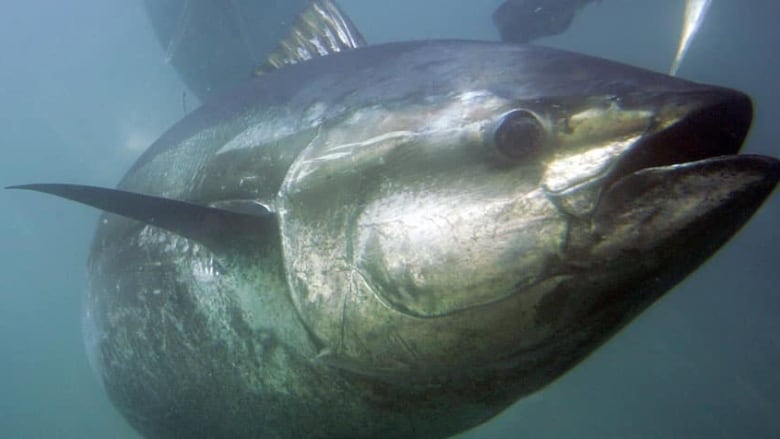Canada's bluefin tuna quota could see bump as big fish sees big rise in population estimates
New minister of fisheries faces first major decision on bluefin tuna

Fishermen plying Atlantic Canadian waters for mighty bluefin tuna are likely to see a small quota increase next year, thanks to a dramatically improved population assessment released by an international commission that manages the stock.
Delegates from Canada, Japan, the United States and other countries will negotiate the 2022 western Atlantic bluefin quota at a virtual meeting Thursday of the International Commission for the Conservation of Atlantic Tunas (ICCAT).
The commission manages migratory fish that cross international boundaries.
The joint proposal is to raise the overall quota by 16 per cent from 2,350 tonnes to 2,726 tonnes.
Most of the increase would go to Japan, based on historical fishing effort. If adopted by the commission, the Canadian quota for 2022 would be 543.6 tonnes, up by nearly 14 tonnes. Canada may also get access to an additional 149 tonnes held by Mexico.
Given the large size of adult tunas harvested in Canada — they typically weigh hundreds of kilograms — the increase would amount to a few dozen more fish.
Last year, scientists for the commission estimated the spawning population of western Atlantic bluefin declined by 11 per cent between 2017 and 2020.
This year, they say the population over that period actually increased by nine per cent, citing new data and new modelling.
'A big surprise'
"This was really a big surprise to everyone, and this is why this year's negotiations have all of a sudden become really important for Canada," said Shannon Arnold of the Ecology Action Centre in Halifax.
"Where we thought we were going to have to reduce the quota a significant amount this year, now people are talking about anywhere from four per cent to a 50 per cent increase."
The bluefin quota is the first big international decision for Canada's new fisheries minister, Joyce Murray, who must provide a mandate to Canadian negotiators. The mandate is Canada's position on the quota or total allowable catch.
Canada holds about 28 per cent of the overall bluefin quota.
Japan initially proposed the commission pick from three potential increases: four per cent, 16 per cent or 28 per cent, based on the new assessment.
The western Atlantic bluefin tuna population is harvested by more than 900 licensed fishermen in Atlantic Canada and Quebec. In 2020, they landed 553 tonnes of the giants, worth $7.7 million.
The fishery is concentrated in Prince Edward Island and Nova Scotia.
In the Gulf of St. Lawrence, it is primarily a rod and reel fishery, while on the Scotian Shelf, it is primarily a longline fishery.
Canada has been 'good stewards'
Arnold, who is an observer at the meetings, said the Canadian industry has patiently waited for the stock to rebound.
"We want to reward the industry here in Canada for being good stewards for a number of years. A moderate increase is great; for us, somewhere around four per cent, no more than 16 per cent," she said.
The assessment report from ICCAT's standing committee, research and statistics attributed the turnaround to additional data showing an increase in the number of tuna that survived to reach reproductive age.
It also involves a change in the modelling.
The committee said the spawning population or biomass is increasing and could support a "moderate quota" increase in 2022. The overall quota last year was 2,350 tonnes.
'A cautious approach'
The science committee has warned of uncertainties, however, including the effects of the eastern or Mediterranean bluefin population mixing with the western population.
Arnold urges caution, as well.
"If we are seeing signs of recovery that we've been waiting for, for many years to show up, let's not cut it off at the knees right away and take it all," said Arnold.
"We're looking for Canada to go in there with a cautious approach which still gives the Canadian fishermen more tuna for next year."